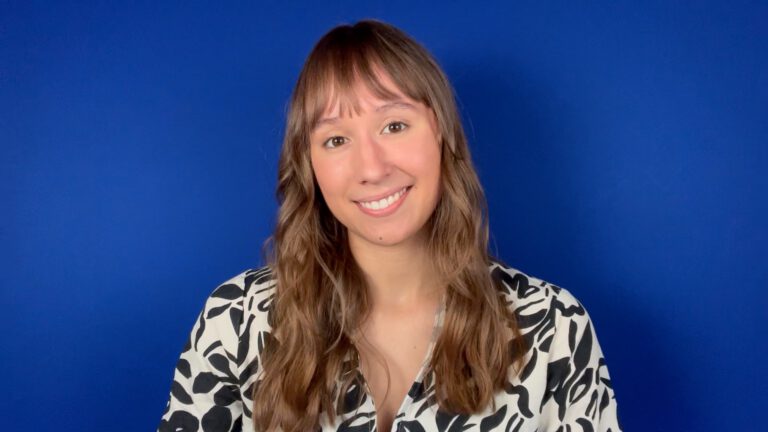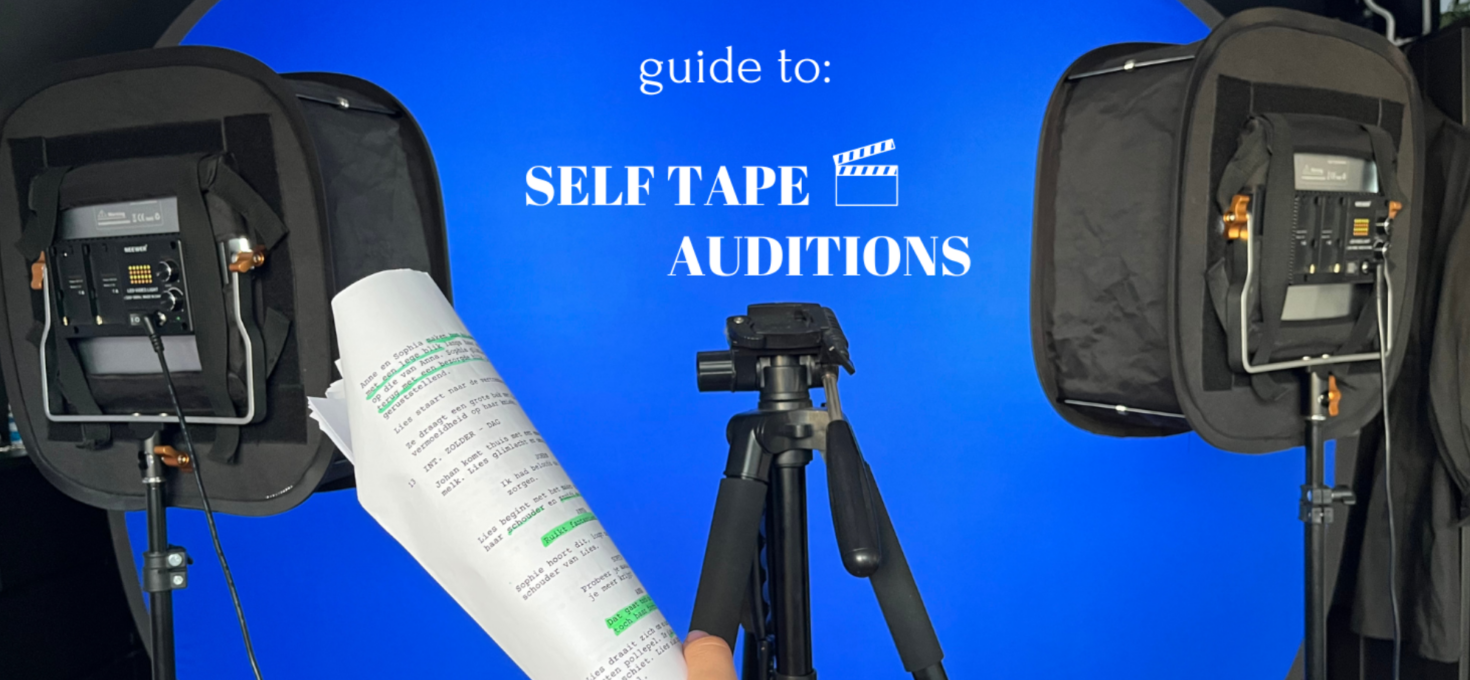In a previous post we talked about your ‘media kit’ and 3 things you should have ready and up to date at all times. In this post we’ll dive deeper into the process of filming self tapes.
I’ve been on both sides of the screen for this one. I’ve filmed and sent countless self tapes myself, but I’ve also cast a short film where I got to watch all the auditions that were sent to me by actors. I can’t wait to share all my tips, do’s and don’ts and insiders I’ve learned in these past few years.
Ok starting with the obvious, but most important thing: check. your. instructions. Casting directors might have specific requests for tapes like an eye line, a framing or certain information in your slate. make sure to follow the instructions and show them that you actually paid attention to what they said. Otherwise, how will they know you’ll be able to follow directions when you get the job?
Once you’ve learned your lines and you know what they want to see, It’s time to set up your shot. If there’s nothing in the briefing about the framing, follow these guidelines: The frame should show you approximately from the top of the chest up and you should have just a little room left at the top of your head. The camera should be positioned at eye-level. This is how I usually frame mine:

For eye lines, I always like to do a little test before I film my scene. If you’re playing a dialogue, you want to pick a spot next to, but not too close to the camera as your scene partner. The reason you want to look close to the camera is because you want the casting director to be able to see the emotions in your eyes, which is harder when you pick a spot too far away.
The background which you’re filming in front of should be plain and not distracting. Don’t overthink it too much though, a simple wall is fine. If you want to look a little more professional, you can opt for a blue or gray background. Stay tuned for the next post to see what gear I use.
Clothing wise, just like in a ‘live’ audition, just wear an outfit that your character could wear (but no costumes! If you want a clarification on this, let me know). Since we’ll usually only see the top half of your body on screen, make sure it looks good from the waist up. Refrain from wearing busy patterns or distracting prints. Hair and make-up should be as natural as possible and fitting to the character. Since the camera can dull some of your features you might want to wear some eyeliner and mascara to make sure your eyes pop and convey emotion.
Now, one question I get asked a lot is: “What do I do if my script says I should do *an action*?”. For example: your script may say that you’re walking through a busy city, or that your character is smoking, or you’re hugging someone. When filming your audition, you don’t have to literally recreate the setting. Better yet, you shouldn’t! Casting wants to see your acting skills, your looks and your choices. They don’t expect you to go and make the film yourself. You want to leave something to the imagination so their minds can fill it in how they want to see the setting. As for props: it’s totally okay if you use something different that poses as the item you’re supposed to have. I used a rolled up piece of paper as a cigarette once and it worked just fine.
One setting that might be an exception to my rule is when you’re supposed to be laying in bed. I’ve had several tapes where this was the case, and what I found that worked the best for me was lowering my backdrop to the ground, laying down a blanket and pillow and filming like that. That way, you can lay down and do the scene, but it still looks professional and clean.
Okay so you’ve finally set up your perfect shot and are ready to film. Now it’s time for your introduction: the slate. In this short video you’re gonna state some information relevant for the casting. Again, check the instructions! If there’s no specific requests, this is a good guideline: State your name, height and location. (stating your age is your own choice, as sometimes it can negatively influence your chances of getting a role if you’re not the right age range. As long as you look the job, you’re good. EXCEPT: if you’re a minor, you do have to state your age as there’s specific requirements needed on set to work with minors.) After this information, tell them just a little bit about your experience, career or yourself. The most important thing is that you want to show some personality during your slate, because this is the only time they’ll see it.
Once you’re happy with your slate, it’s time to get started on your scene. Hopefully you have your lines memorized by now and are ready to get into it. When doing your scene, my biggest tip is: make bold choices, don’t play the scene in the first way that comes to mind, but try to think of other interpretations that keep it interesting for casting directors to keep watching. Also: I know this can be so hard, but try not to get too caught up in every little detail so much that you’ll end up with 50 takes. Usually the first few ones will be more authentic and spontaneous anyway.
What do you do when you’re asked to film a scene with a dialogue or more different characters? You get a ‘reader’ aka, someone who reads all your scene partners lines off screen. The best option is to ask someone (sister, parent, partner, friend etc) to sit behind the camera and read while you play. That’s the best case scenario. But what if you can’t get anyone to help you ‘live’ at the moment? The second best option is trying to call someone that will read with you over the phone. Just place your phone behind the camera and do your scene. The downsides to this is that you won’t have as spontaneous interaction with your scene partner, and sometimes you’re asked to sign an nda before getting the scene, so you’re not allowed to send it to someone else. The ultimate last resort, when there is nobody to help you at all, is to leave your scene partners’ lines silent. You’ll have to learn every line in the script and react to them as if you can hear them talking. This is not really a preferred way to film the audition, so if you have the chance to film it with someone else, do it!
Now, before I get into the gear that will make your life easier, I just want to say: you don’t need anything but a phone to film your audition. Don’t let the prospect of needing to buy all kinds of gear scare you away. Start auditioning with just your phone, a plain wall and some daylight. In the end, all the casting directors really want to see is your acting ability.
Having said that, if you want to take your self tapes a step further and really give them that ‘I’m a professional working actor’ kind of look, some gear can really help you out. In the next post I’ll show you exactly what I use for my self tapes. For now a quick word of advice: the first thing I’d buy are some lights. Then, if you want to get that iconic blue background, buy a backdrop. And lastly: a tripod for your phone while filming makes life so much easier.
I hope this in depth guide answered some questions and will help you film auditions that get you roles. Let me know if it worked for you!
Stay tuned for next post where I’ll talk about my favorite gear!

[…] the last post we talked about self tapes and the do’s and don’ts. Today, as promised, I’ll walk you through some of my favorite pieces of gear that make your […]